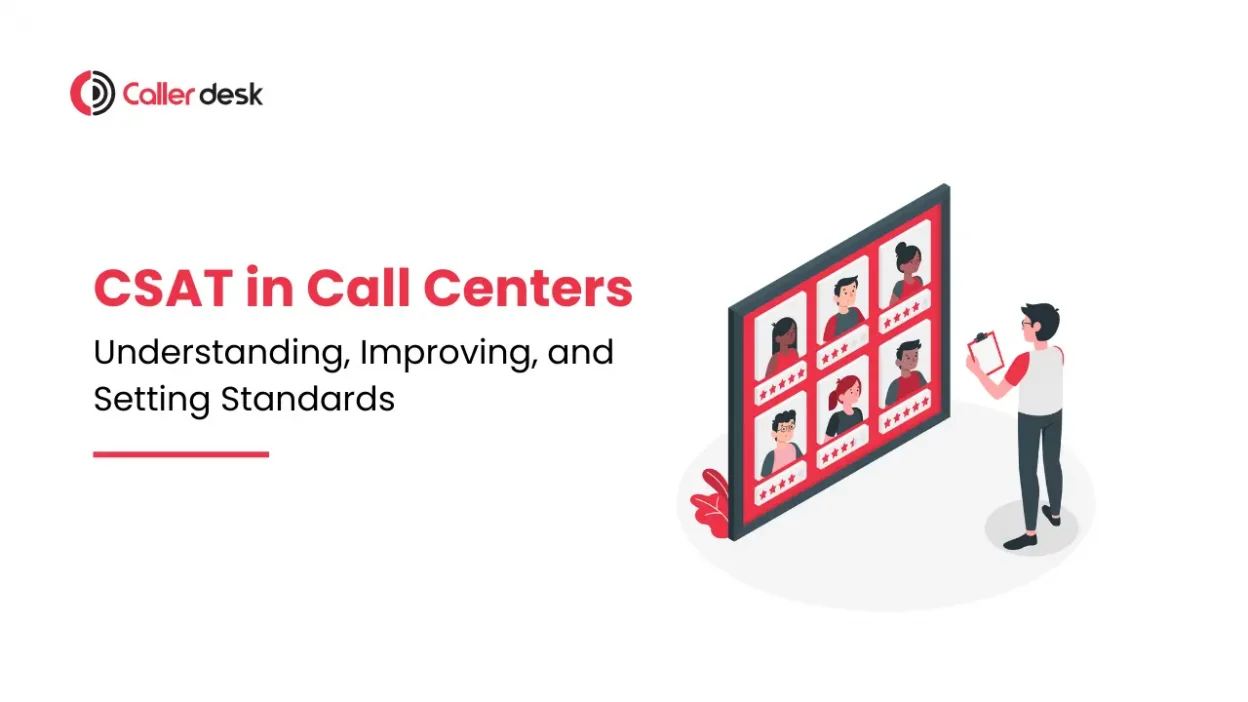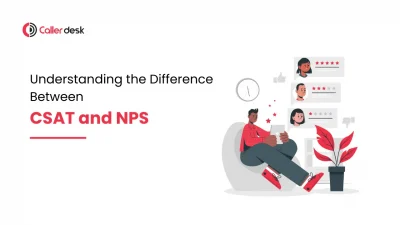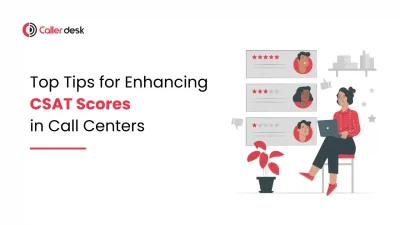Have you ever wondered why call centers care so much about Customer Satisfaction (CSAT)? It’s because satisfied consumers are key for every successful firm. High CSAT scores mean customers are happy with the service, which helps keep them loyal and makes the business thrive.
In this blog, we’ll break down what CSAT is, how to measure it, and how to improve it in more detail, but still in simple terms.
What is CSAT?
CSAT stands for Customer Satisfaction. It’s a metric that measures how satisfied customers are with a company’s products, services, or interactions. In call centers, CSAT is usually measured through surveys that customers fill out after they’ve talked to a representative. They rate their experience on a scale, often from 1 to 5. High scores (like 4 or 5) mean your customers had a good experience; low scores (1 or 2) mean there’s room for improvement.
How to Measure Success with CSAT
Measuring success with CSAT involves a few easy steps:
1. Post-Call Surveys
After a call, send customers a quick survey. Keep the questions short and focused on key parts of the interaction, like how polite the agent was and if their issue was resolved. These surveys can be sent via email, text, or directly after the call through an automated system.
2. CSAT Score Calculation
To find your CSAT score, count how many customers gave a high rating (usually 4 or 5), divide that by the total number of responses, and then multiply by 100 to get a percentage. For example, if 80 out of 100 customers are happy, your CSAT score is 80%.
3. Analyzing Feedback
Look at the survey results regularly to spot common themes. Maybe you notice that many customers mention long wait times or unclear communication. This insight helps you pinpoint specific areas for improvement.
4. Benchmarking
Compare your CSAT scores to industry averages to discover how you’re performing. This allows you to better understand your own strengths and areas for improvement. Industry reports and studies can provide these benchmarks.
How to Improve CSAT Scores
Improving CSAT scores is straightforward with these steps:
1. Comprehensive Training Programs
Train your agents regularly on customer service skills, product knowledge, and problem-solving. Well-trained agents can handle customer issues more effectively, making customers happier. Role-playing scenarios and continuous education programs can be very effective.
2. Implementing Cloud Telephony
Using cloud telephony can make calls clearer, reduce wait times, and ensure customers reach the right agent quickly. These enhancements result in a more efficient and satisfying customer experience. Cloud systems often come with advanced features like call analytics and intelligent routing.
3. Utilizing Customer Feedback
Listen to your customers! Act on their feedback by addressing common complaints and making necessary adjustments. For example, if customers frequently mention long wait times, consider boosting your staffing during peak hours or optimizing your call routing.
4. Empowering Agents
Allow your agents to make decisions to resolve customer issues quickly. When agents feel empowered, they can provide better service, which makes customers happier. This might include allowing agents to offer small discounts or perks to resolve issues on the spot.
Setting Standards for CSAT
Setting standards for CSAT helps keep service quality consistent and drives continuous improvement:
1. Define Clear Objectives
Set specific, measurable goals for your CSAT scores. For example, aim for a 90% CSAT score within six months. Clear goals give your team something to strive for and make it easier to track progress.
2. Regular Monitoring
Keep track of CSAT scores and discuss them in team meetings so everyone knows how they’re performing. This helps catch and address issues early. Use dashboards and regular reports to keep everyone informed.
3. Incentivize High Performance
Reward agents who consistently get high CSAT scores. This motivates them to keep providing excellent service. Rewards can include bonuses, extra time off, or public recognition. Even little incentives can significantly boost motivation.
4. Continuous Improvement
Always look for ways to improve. Regularly review processes and encourage agents to suggest improvements. Hold regular training sessions and workshops to keep improving skills and processes.
Conclusion
CSAT in call centers is more than just a number; it’s about making customers happy and continuously improving service. By measuring CSAT accurately, using feedback to make improvements, and setting clear standards, call centers can significantly enhance their customer service and overall performance.
Frequently Asked Questions (FAQ)
Q1: How can cloud telephony improve CSAT in call centers?
Cloud telephony improves call quality, reduces downtime, and offers advanced features like intelligent call routing, which enhance the overall customer experience.
Q2: What are some common challenges in measuring CSAT?
Common challenges include low survey response rates, biased feedback, and misinterpretation of data.
Q3: How often should we review our CSAT scores?
It’s advisable to review CSAT scores monthly to identify trends and make timely improvements.
Q4: Can CSAT scores impact employee training programs?
Yes, CSAT scores provide valuable insights into areas where agents need further training and development.
Q5: What role does technology play in improving CSAT?
Technology, such as cloud telephony, plays a crucial role by enhancing call quality, reducing wait times, and providing better tools for managing customer interactions.



